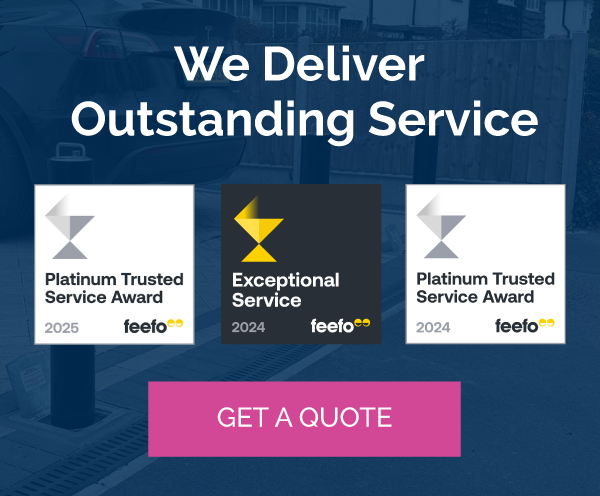Large Stock Available
Domestic & Commercial
Installation Within 10 Days
Quality
Of Work
Parking Security
Price Match Guarantee
5 key steps to forming a solid on-site traffic calming strategy

If you’re operating a busy commercial site, especially if it’s open to the public, then one evergreen priority will be to ensure that traffic is tightly controlled – it’s vital for reducing vehicle speeds, maintaining safety, and protecting both infrastructure and pedestrians. Whether you’re managing a private car park, industrial estate, retail complex or a residential development, you’ll need to consider both strategic planning and adaptive monitoring, as well as the best choice of traffic calming measures to achieve your aims.
That’s where we can help here at Bollard Security. With years of experience behind us, we supply a comprehensive range of traffic calming and site security measures, including driveway bollards, commercial automatic bollards, and speed ramps – just to name a few. Below are five key steps to help you lay down a reliable traffic control framework that delivers results.
Assess site layout and traffic risks
One of the first steps you’ll need to take is to assess how vehicles move through your site. One good way to do that is to walk the space during different times of the day, and observe how drivers navigate key points like entrances, exits, pedestrian areas and service routes. If you’re able to note areas where drivers tend to speed, cut corners or idle inappropriately, that can provide hugely valuable insights for traffic calming plans.
You may find that particular zones would benefit from better visibility or slower speeds – common culprits tend to include blind bends, loading bays or staff entrances. Feedback from people who use the site regularly, such as facilities teams or tenants, can help uncover patterns that otherwise might not be immediately obvious. Spotting recurring trends like vans racing through service routes, or bottlenecks forming near exit points, can highlight areas that could benefit from particularly strong control measures.
Define clear priorities for vehicle control
Once you’ve got a clearer picture of how traffic behaves on-site, it helps to get clear on your main objectives. You might be aiming to reduce general speeds, stop unauthorised vehicles entering certain zones, or protect specific assets from impact. They’re all similar but very distinct objectives, even if they overlap, so it can help to outline priorities early, and keep the approach focused.
For example, if you’re concerned with unauthorised access to your site, you might find yourself leaning towards permanent or retractable security bollards, whereas areas with routine speeding could benefit more from raised surfaces like speed bumps or speed ramps. Some settings will require a mix of both. Try to factor in different user groups too – including regular drivers, delivery vans, emergency services – and think about how their needs vary depending on the time of day or season.
Map out bollard placement for maximum effect
Security bollards can be particularly useful for helping to establish a firmer sense of control over your site. It’s not just about blocking movement – more about helping to shape how drivers interpret and respond to space. Used in the right way, they can guide vehicles, protect key infrastructure and signal that an area is off-limits without the need for fences or barriers.
For example, you can place bollards near pedestrian crossings, around utility boxes or at pinch points to create natural buffers. You might also find they work well in tandem with speed bumps, enhancing the visual impact and reinforcing the need to slow down. Their visibility is just as important as their function, so it’s worth taking the time to make sure they’re easy to spot in all conditions – such as by using bright colours, reflective bands or integrated lighting.
It’s also a good idea to consider lighting, weather conditions and visibility when selecting styles and finishes. Flexibility matters too – using a mix of fixed and removable bollards allows access where it may be required, without compromising everyday traffic control.
Use signage to reinforce on-site awareness
Signs are a straightforward but powerful way to support your traffic calming strategy. Let’s be honest, drivers are more likely to respond positively to physical features when they understand the reason behind them, and well-placed signage helps set those expectations with clarity and consistency.
You’ll ideally want to choose signs that are durable, legible and consistent in tone. Crucially, place them where decisions are made – before turns, at site entrances, or ahead of obstacles like speed ramps and bollards. Road markings such as arrows, warnings and speed indicators can reinforce the message on the ground. Keeping the visual language simple and unambiguous helps everyone stay aligned, especially in areas where drivers may be unfamiliar with the layout.
It’s also wise to review signage every few months, as that helps you to maintain visibility and avoids confusion. It’s also worth inspecting for fading, obstruction from foliage, or damage that could reduce how effectively the message is delivered.
Monitor changes and adapt the layout accordingly
Once measures are installed, it’s best to treat them as part of a living system rather than a permanent fixture. Over time, you might notice new behaviours emerging – for example, perhaps you’ve spotted that vehicles are slowing down in one area but cutting through another, or maybe a particular speed ramp is causing unnecessary disruption to site traffic.
Regularly gathering feedback from people, reviewing CCTV footage or carrying out occasional spot checks are all instrument measures that can highlight where refinements might be needed. Sometimes a slight adjustment like moving a bollard, changing ramp spacing, or refreshing signage can improve flow without requiring a major redesign.
There’s also the fact that seasonal shifts, site upgrades or changes in footfall can also affect how the space is used, so keeping an eye on those patterns supports smooth adaptation. As well as helping you to respond to traffic behaviour, ongoing monitoring is also useful for helping you to address wear and tear, identifying vandalism, and making sure all traffic control elements continue to serve their intended purpose.
That’s all the essentials covered! And of course, if you ever need any traffic control measures to help you achieve your specific goals for your site, that’s exactly where we can help here at Bollard Security. As well as driveway bollards, commercial automatic bollards, and speed ramps, our stock also encompasses additional traffic calming measures like sunken flow plates and surface mounted flow plates, so you’ll always have plenty of options. And of course, we can provide them all at the very best prices.
Don’t forget, if you ever have any questions about any of our products, or you ever need any help or advice, don’t hesitate to give us a call on 01535 509001, and we’ll be happy to help!



